Talk with our local travel specialist who can help organize your trip.
Entrance Fees To Visit Heritage sites in Nepal
Heritage Sites in Nepal offer a chance to enjoy the architecturally, culturally, and naturally beautiful Nepal. Moreover, Kathmandu Valley, Lumbini, Sagarmatha National Park, and Chitwan National Park Heritage sites have been inscribed into the UNESCO World Heritage Sites.
In Kathmandu alone, there are 7 major heritage sites. Pashupatinath, Swayambhunath, Durbar Squares of Kathmandu, Bhaktapur, and Patan, are apt reflections of reflecting the Hindu and Buddhist religion and the history of the early monarchy. Lumbini, the birthplace of Lord Buddha depicts the history of Buddhism. While Chitwan National Park showcases the protected flora and fauna of lowland Terai, Sagarmatha National park is home to the tallest mountain in the world, Mt. Everest.
These sites have received this honor for upholding the ancient culture and beliefs of the country. Being a heritage site, an entry fee is compulsory at the entry point. The fees have been positively discriminated according to citizenship and age group. The cost is a main source of income for the tourism sector in Nepal and is partially utilized for the protection and management of these sites. Hence it is necessary to know about the updated cost information. In most of the sites, Entrance ticket can be purchased from the counter.
Refer to the updated Heritage Sites Entrance Fee in Nepal, mentioned below:
Table of Content
- Kathmandu Durbar Square Including Tribhuvan Museum
- Patan Durbar Square Including Patan Museum
- Patan Golden Temple
- Bhaktapur Durbar Square
- National Art Museum, Bhaktapur
- Swayambhunath Stupa
- Bauddhanath Stupa
- Pashupatinath Temple
- Changunarayan Temple
- Lumbini
- Lumbini Museum
- Kapilvastu Museum
- Chitwan Elephant Breeding Camp
- Tharu Cultural Museum, Chitwan
- Nagarkot
- Narayanhiti Palace Museum
- Ethnographic Museum, NTB, Bhrikutimandap
- Garden of Dreams, Katmandu
- International Mountain Museum
- Sarangkot, Pokhara
- National Museum, Chauni
- Godawari Park
Kathmandu Durbar Square Including Tribhuvan Museum
Kathmandu Durbar Square located in the heart of the ancient Kathmandu Kingdom dates back to the 12th century. Locals often refer to it as Basantapur Durbar Square in Freak Street. With over 50 temples, palaces, and courtyards clustered together, it is the largest concentration of ancient architectural buildings in Nepal. Thus, it is dubbed as 'the museum of temples' and inducted into the UNESCO World Heritage Sites list.
Kathmandu Durbar Square boasts exotic engravings on the temples. There is a noteworthy three-storied quadrangle pagoda building called Kasthamandap Temple, three-storied gold-plated pinnacle Taleju Temple, a giant stone statue of lord Kala Bhairab, and Shiva Parvati Temple, among others. On the left side of the entrance to the Durbar Square is the must-see Kumari Bahal; the residence of Kumari – the only living Goddess in the world.
One of the most prominent places in the courtyards is Tribhuvan Museum built in Hanuman Dhoka Durbar (Old Royal Palace). The Shah kings left the royal palace after a new palace of Narayanhiti was built in 1886. Ever since then, royal objects, artifacts, weapons, and personal belongings of King Tribhuvan Bir Bikram Shah have been placed in the part of the palace called Tribhuvan Museum. It is a walk back in time and rich history.
Entrance Fees:
|
Foreign Nationals |
NPR 1000 |
|
SAARC nationals |
NPR 150 |
|
Chinese |
NPR 1000 |
|
Nepalese |
Free |
|
Remarks |
Below 10 years free |
Patan Durbar Square Including Patan Museum
Patan Durbar Square, the residential courtyard with the royal palace of former Malla kings, is located in the heart of Lalitpur city. It is one of the three Durbar Squares in the Kathmandu Valley, inducted into the World Heritage Site list.
The majestic Newari architecture is portrayed from the gilded doors, windows, and rich interior. The vicinity claims 136 courtyards/bahals and 55 temples interwoven in Hinduism and Buddhism. The three-storied Krishna Mandir, three-golden windowed Bhimsen Temple, erotic carvings in Vishwanath Temple, and the five-storied Taleju Bhawani temple depicts religion assorted in ancient history.
Patan Durbar Square museum is a section in the courtyard that has been inducted into the UNESCO World Heritage Site. Find over 1100 artifacts preserved culture and iconography of Hinduism and Buddhism are exhibited in the museum. Among the collection, tourists wow over copper repousse work by local craftsman, cast bronze sculptures, and centuries-old statues of relics. Opening hours of the museum are from 10:30 AM to 5:30 PM throughout the week.
Entrance Fees:
|
Foreign Nationals |
NPR 1,000 |
|
SAARC nationals |
NPR 250 |
|
Chinese |
NPR 1,000 |
|
Nepalese |
Students with a letter from school: NPR 10; Student Card Discount: NPR20; Others: NPR30 |
|
Remarks |
Entry fees for Nepalese are applicable only for Patan Museum |
Patan Golden Temple
Patan Durbar Square Golden Temple is a three-storied golden pagoda styled temple of Shakyamuni Buddha built in the 14th century. It is situated on the northern side of Patan, Lalitpur passing down the narrow alleyway of the courtyards. Its local name, Hiranya Varna Mahavihar is derived from the legend of a mouse named Hiranyak with sparkling eyes like a diamond.
Guarded by 2 stone lions, it opens up to traditional drinking water fountains, bronze and stone sculptures of Deities, prayer wheels, and the Bihar with golden pinnacle. The carvings and manuscript itself are enough to keep historians and pilgrims amazed. The best way to see Golden Temple is by taking a tour around Kathmandu Valley.
Entrance Fees:
|
Foreign Nationals |
NPR 50 |
|
SAARC nationals |
NPR 20 |
|
Chinese |
NPR 50 |
|
Nepalese |
Free |
|
Remarks |
Closed on Buddha Jayanti |
Bhaktapur Durbar Square
Bhaktapur Durbar Square is an archaeological and historical wonder depicting the ancient Bhaktapur Kingdom, known then as Khowpa or Bhadgaon. Located just 13 km east of Kathmandu city, the complex has four major squares Durbar (Palace), Taumadhi, Dattatreya, and Pottery Square. The historical background of Bhaktapur Durbar Square dates back to 1769, constructed by King Jitamitra Malla. It was enlisted in the World Heritage Site back in 1979 as one of the three Durbar Squares in Kathmandu Valley.
Visit the iconic 55 Window Palace/Nge Nyapa Jhya Laaykoo, Vatsala Devi Stone temple, and biggest and highest pagoda; Nyatapola Temple. Bhaktapur durbar square architecture boasts temples and monuments like Bhairava Nath Temple, The Golden Gate, erotic Elephants carvings in Shiva Parvati Temple, Mini Pashupati Temple, and Lion’s Gate. Furthermore, the local gift shops showcase the Newari architecture by artists and craftsmen. Enjoy molding clay by taking an authentic pottery class.
Entrance Fees:
|
Foreign Nationals |
US$ 15 or NPR 1,500 |
|
SAARC Nationals |
NPR 500 |
|
Chinese |
NPR 500 |
|
Nepalese |
Free |
|
Remarks |
Below 10 years free. For groups from 11-20, one tour leader can enter free. |
National Art Museum, Bhaktapur
National Art Museum Bhaktapur is located in the western end of the Bhaktapur Durbar (Royal Palace). It was erected in 1698 by the then monarch King Bhupatindra Malla. Known locally as Simhadhwoka Layaku, the National Art Gallery Bhaktapur is an epitome of ancient art dating back to the Licchavi period and henceforth.
Two stone sculpture of lions warmly welcomes tourists at the entrance, a short walk from the entrance of the Durbar Square. Hold on to the ticket shown here which will be used for the wood carving and brass and bronze museums. Stone sculptures and masks of prestigious deities follow along the way. The ground floor is home to statues of Hindu gods, Bhairava, Bhairavi and Mahasambhara, Bajrabarahi erotic paintings.
On the first floor of the building, the airbrush and classical paintings of Shiva, Ganesh Shakti, Krishna, and other deities are carefully preserved. The memories of the long-gone monarchs are kept alive with their paintings. Centuries-old written inscription takes you back in time.
Entrance Fees:
|
Foreign Nationals |
NPR 150 (NPR 100 for camera, NPR 200 for video camera) |
|
SAARC Nationals |
NPR 50 (NPR 50 for camera, NPR 150 for video camera) |
|
Chinese |
NPR 150 (NPR 100 for camera, NPR 200 for video camera) |
|
Nepalese |
Students: NPR10; Others: NPR25 (NPR 50 for camera, NPR 100 for video camera) |
|
Remarks |
Closed on Tuesdays. The fee includes wood carving and brass and bronze museum in Dattrareya Square. |
Bauddhanath Stupa
A must-visit for tourists, Swayambhu Stupa/Monkey Temple is one of the jewels located atop a hill 3 km west of Kathmandu city. Revered as the most sacred Buddhist pilgrimage site, the Swayambhunath, built-in 460 AD, is a Sanskrit word translated to ‘self-manifested’.
Swayambhu stupa's architecture is a meticulous whitewashed dome rising to a gilded spire with four faces of Buddha staring into the Kathmandu Valley. Apart from the small prayer wheels surrounding the monument, there is a temple that is dedicated to the God of Learning, Saraswati. Statues of Buddhist and Hindu deities can be found on the complex and devotees are seen circumambulating the stupa. A huge statue of Shakyamuni Buddha is on the west side of the stupa. The complex also has a Sleeping Buddha, Dewa Dharma Monastery, and a temple dedicated to Goddess of all Children, Harati.
Entrance Fees:
|
Foreign Nationals |
NPR 200 |
|
SAARC nationals |
NPR 50 |
|
Chinese |
NPR 200 |
|
Nepalese |
Free |
|
Remarks |
Below 10 years free. |
Pashupatinath Temple
One of the major attractions in the northeastern rim of Kathmandu, Bauddha Stupa is the largest stupa in Nepal and one of the largest in the world. The Bauddha Stupa is believed to have been built in the 590 to 604 CE by the Nepalese Licchavi King Sivadeva. A visit to the Bauddha Stupa most certainly cleanses the spirit.
The area surrounding the stupa is called Bauddha and is inhabited by Tamang and Lama community who preserve the Stupa. As per its history and legend, the stupa is believed to entomb the remains of Kassapa Buddha. The dome is adorned by small prayer wheels where pilgrims circumambulate the stupa. The base of the stupa is also decorated with 108 images of Dhyani Buddha Amitabha. In the vicinity, you can find new restaurants and cafes contrasting with the Boudhanath temple and large prayer wheel.
Entrance Fees:
|
Foreign Nationals |
NPR 400 |
|
SAARC Nationals |
NPR 100 |
|
Chinese |
NPR 400 |
|
Nepalese |
Free |
|
Remarks |
Below 10 years free. |
Pashupatinath Temple
Located on the banks of the Bagmati River in the north-eastern part of Kathmandu, Pashupatinath Temple is the holiest Hindu Temple dedicated to Lord Shiva. The temple’s history dates back to the 5th century during the Licchavi period under monarch Prachanda Dev. In 1979, the temple was inscribed on the UNESCO World Heritage Site list. Each year, thousands of Hindu pilgrims come to worship the deity on the Maha Shiva Ratri Bala Chaturthi Festival and Teej Festival.
There are 4 entrances to this heritage site but only practicing South Asian Hindus are allowed entry to the inner courtyards. However, tourists can explore the outer vicinity of the temple. While foreigners have to pay entry fees, Nepalese can enter freely. The main temple is Nepalese Pagoda Styled with copper and gold roof and pinnacle. Pashupatinath temple’s architecture alone is immaculate with its wooden and metal carvings.
Spanning over 0.64 hectares of land, the temple houses 518 temples and monuments. The inner courtyard includes temples and shrines of Vasuki Nath, Surya Narayan, Kirtimukha Bhairava, and 184 Shivalinga. The outer complex includes the temple of Lord Ram, Virat Swaroop, Guhyeshwari Temple 12 Jyotilingha, and 15 Shivalaya. The holy Bagmati river flowing between the vicinity sees important rituals being performed like the daily Aarati, Puja, and the religious dead body burning cremation rights. Pashupatinath Temple is a true representation of Hindu religion, culture, and traditions.
Entrance Fees:
|
Foreign Nationals |
NPR 1,000 per day per entry |
|
SAARC nationals |
NPR 1,000. Free for Indian Nationals |
|
Chinese |
NPR 1,000 |
|
Nepalese |
Free |
|
Remarks |
Tourists can view the temple from the back premises. |
Where to travel next?
Get help from our travel specialists for holiday ideas that matches your interests.
Changunarayan Temple
Changunarayan Temple is considered to be the oldest temple in Nepal. It was built sometime in the 2nd century during the Licchavi monarchy in Changu/Dolagiri hilltop 12 km east of Kathmandu city, north of Bhaktapur.
Upon entering the Eastern Gate, the temple is seen at full display. The double roofed traditional Nepali style temple is dedicated to Lord Vishnu. Other noteworthy shrines and temples include the Historical pillar erected by Licchavi King Manadev, the Statue of King Bhupalendra Malla, Changunarayan stone sculpture, Sridhar Vishnu, Narsimha, Kileshwor, Vishworup deity stone sculptures.
A refreshing view of the Kathmandu valley on the horizon can be seen from the viewpoint. You can also visit the Changu Museum and Ethnographic Museum in the complex with a unique collection of ancient objects and photographs.
Entrance Fees:
|
Foreign Nationals |
NPR 300 |
|
SAARC nationals |
NPR 100 |
|
Chinese |
NPR 300 |
|
Nepalese |
Free |
Lumbini
Lumbini, a Buddhist pilgrimage site located in the Terai plains close to the Indian border in the south, is famous for being the birthplace of Lord Buddha. As per Buddhist religion, Queen Mahamayadevi gave birth to Siddhartha Gautama in 563 BCE in the modern-day Lumbini. Siddharth Gautam later achieved enlightenment and became Lord Buddha, the founder of Buddhism.
Lumbini was inscribed as a UNESCO World Heritage site in 1997. The most complex archeological display is the remains associated with the birth of Buddha. Among many monuments, the Lumbini Ashoka pillar is most noteworthy. Inscriptions written in the pillar suggest that the emperor of the Maurya Empire, Ashoka had been to Lumbini in the 3rd century and identified it as the birthplace of Buddha. Other tourist attractions are the Mayadevi Temple, ruins of ancient monasteries, World Peace Pagoda, Myanmar Golden Temple.
Recommended Read : Getting from Kathmandu to Lumbini
Entrance Fees:
|
Foreign Nationals |
NPR 200 |
|
SAARC Nationals |
NPR 100 |
|
Chinese |
NPR 200 |
|
Nepalese |
Free |
|
Remarks |
NPR 16 for Indians. |
Lumbini Museum
Lumbini Museum Nepal is located within the Sacred Garden Area of Lumbini, beside the South Pond. Was originally built in the 1970s and has now been reimagined by Japanese and Taiwanese architects. It is opened from Wednesdays to Mondays from 10 AM to 4 PM.
Museum in Lumbini is an apt place to learn about the history and artifacts of Buddhism and the birthplace of Lord Buddha. It displays around 12000 artifacts associated with Buddhism. They include manuscripts, metal sculptures, ancient coins, stamps, ceremonial dresses and objects, and Terra cottas.
Entrance Fees:
|
Foreign Nationals |
NPR 50 |
|
SAARC Nationals |
NPR 50 |
|
Chinese |
NPR 50 |
|
Nepalese |
NPR 10 |
|
Remarks |
Closed on Tuesdays |
Kapilvastu Museum
The Kapilvastu Museum has located about 26km from Lumbini. It is the epitome of archeological ruins of the Tilaurakot Palace complex and other territories of ancient Kapilvastu, the birthplace of Lord Buddha. Established in 1962, it is now home to a collection of archeological treasures of the past era.
The museum houses intriguing objects like terracotta human figurines, animal figurines, bangles, dabber, flesh rubber, coins, musical instruments, pottery, copper ornaments, bones, all found from ancient ruins. Immerse into the rich ancient history of the birthplace of Lord Buddha by visiting the Kapilvastu museum.
Entrance Fees:
|
Foreign Nationals |
NPR 10 |
|
SAARC Nationals |
NPR 5 |
|
Chinese |
NPR 10 |
|
Nepalese |
NPR 2 |
Chitwan Elephant Breeding Camp
Chitwan National Park located in the Southern Central Terai is the first national park of Nepal. It was inducted into the World Heritage Site list in 1973. Tourists can enter from the east at Sauraha and west at Meghauli village.
Chitwan National Park is famous for the jungle safari in the fertile grassland and subtropical deciduous forests. The wide range of fauna found in the park includes rock python, monitor lizards, Chital Stag, Gharial crocodile. But most noteworthy are the Bengal Tiger and Great One-Horned Rhino. The buffer zone is surrounded by ethnic Tharu communities. Indulge in a jeep safari, elephant safari, bating, explore the local communities, visit the Elephant and Gharial breeding camp, enjoy birdwatching, and more.
Recommended Read : How to Get Chitwan National Park from Kathmandu?
Entrance Fees:
|
Foreign Nationals |
NPR 1,500 per day per entry +13% VAT |
|
SAARC Nationals |
NPR 750 per day per entry+13% VAT |
|
Chinese |
NPR 1,500 per day per entry+13% VAT |
|
Nepalese |
NPR 100+13% VAT |
|
Remarks |
Elephant ride fare - Foreigner: NPR 2,500; SAARC: NPR 1,500; Nepali NPR 500 |
Chitwan Elephant Breeding Camp
Chitwan Elephant Breeding Centre is one of the two elephant breeding centers that exist in the world. It is located inside Chitwan National Park, approximately 3 km from Sauraha. It was established in 1986 with 20 Elephants for the motive of protecting these giants. As of 2014, there were 51 elephants and have been multiplying by number since.
The site is worth a visit as it displays elephant meal preparation, nurturing them, and Elephant bathing activities. You can visit the center from 7 AM to 10 AM and 3 PM to 4 PM in the summer, while in the winter it is open from 8 AM to 11 AM and 2 PM to 4 PM.
Entrance Fees:
|
Foreign Nationals |
NPR 50 |
|
SAARC Nationals |
NPR 25 |
|
Chinese |
NPR 50 |
|
Nepalese |
NPR 10 |
|
Remarks |
|
Tharu Cultural Museum, Chitwan
Tharu Culture Museum is an intriguing place to learn about Nepal’s largest and most marginalized ethnic groups, Tharu Community. They were the indigenous tribe in the area and made 100% of the population there in 1955.
It is a 10 minutes’ walk from the Tharu village of Sauraha, Chitwan. From a collection of fishing baskets, clothes to cookware, get an opportunity to experience their history, culture, and traditions. You can also witness their unique dance performance of Fire, Peacock, Stick Dances in the evening along with traditional food in the local hotel.
Entrance Fees:
|
Foreign Nationals |
NPR 25 |
|
SAARC Nationals |
NPR 15 |
|
Chinese |
NPR 25 |
|
Nepalese |
NPR 10 |
|
Remarks |
Below 10 years free. |
Nagarkot
Nagarkot hill station at the altitude of 2,175m/7,135ft is a popular tourist destination for outdoor enthusiasts and nature lovers, located 32 km from Kathmandu city. It is best known for the amazing sunrise and Himalayan scenery spanning from Dhaulagiri in the west to Everest and Kanchenjunga in the east on a clear day. The hilltop viewpoint broadcasts 8 of the 13 Himalayan ranges in Nepal.
The entry fee must be paid in the booth near the bus stop to Nagarkot. South of this former village, there is a view tower with 360-degree panoramic views of mountains. To reach the tower one must pass an army checkpoint.
Entrance Fees:
|
Foreign Nationals |
NPR 300 |
|
SAARC nationals |
NPR 100 |
|
Chinese |
NPR 300 |
|
Nepalese |
Free |
Narayanhiti Palace Museum
Narayanhiti Palace Museum is a chic gateway to the former palace of the Shah dynasty of Nepal. Located in the heart of Kathmandu, it was built in 1863 by King Mahendra. The palace was announced as a Museum in 2008, after the last monarch King Gyanendra was dethroned.
Narayanhiti Palace Museum opens from Wednesday to Monday from 11 AM to 4 PM. The ancient monuments hold untold stories in the mysterious maze of rooms and wings. There are three wings; Private wing, Guest wing, and the State wing with 52 rooms named as districts of Nepal.
Most noteworthy is the 60 feet tall Gorkha Baithak with the throne of the king made of gold and silver. The Durbar also saw the infamous Royal Massacre in 2001. Rooms where the royals were gunned down have been left as it is with bullet scars and bloodstains.
Holding historical importance, the museum requires entrance fee to be paid at the counter near the gates.
Entrance Fees:
|
Foreign Nationals |
NPR 500 |
|
SAARC nationals |
NPR 250 |
|
Nepalese |
Students: NPR 20, Others: NPR 100 |
Ethnographic Museum, NTB, Bhrikutimandap
Ethnographic Museum Nepal located in Bhrikutimandap in the heart of Kathmandu city is the only museum dedicated solely to the ethnic groups of Nepal. Established in 2000, the museum has safeguarded and promoted Nepal’s ethnic and cultural heterogeneity.
The museum exhibits a collection of the rich cultural heritage of 11 ethnic communities like Jyapu, Sherpa, Tamang, Rai, Limbu, Sunuwar, Tharu, Magar, and Gurung. Tourists who are absorbed in learning about the customs, lifestyle, and occupation of ethnic communities of Nepal, should certainly visit the museum once.
Entrance Fees:
|
Foreign Nationals |
NPR 200 |
|
SAARC nationals |
NPR 100 |
|
Chinese |
NPR 100 |
|
Nepalese |
Students: NPR 15; Others: NPR 30 |
Garden of Dreams, Katmandu
Garden of Dream situated in the prime location; central Thamel in Kathmandu, is a neo-classical garden. The garden is a heritage site as it is a part of the Kaiser Mahal- Rana palace of the patron Kaiser Sumsher Rana in the 1920s. It is a dreamy combination of rich history and nature.
Garden of Dreams Kathmandu opening hours are from 9 AM to 10 PM and an entry fee will be charged to foreign as well as domestic visitors. Parts of the garden resemble those in England during the time of Edward VII. The garden spans 6895 square meters with a lily pond, fountains, pergolas, amphitheater, urns, three pavilions, and a restaurant.
Entrance Fees:
|
Foreign Nationals |
NPR 200 |
|
SAARC nationals |
NPR 200 |
|
Chinese |
NPR 200 |
|
Nepalese |
NPR 100 |
|
Remarks |
Below 5 years free. NPR 50 from 5-11 years. 25% discount for a group of 10 pax. |
Where to travel next?
Get help from our travel specialists for holiday ideas that matches your interests.
International Mountain Museum
International Mountain Museum (IMM) is located on the southeastern side of the City of Lakes, Pokhara. Established in 1995, by the Nepal Mountaineering Association, it sees more than 70000 domestic and international tourists each year.
The museum contains 4 main exhibition halls. Hall of Mountain people contains examines of the objects of mountain people in Nepal and the world and a giant sand mandala. Second, the Hall of World Mountain has flora and fauna, climbing equipment display, ancient fossils, and rock. Third, Hall of Mountain activities contains mountaineering equipment. Fourth, the Mountain ecology and environment section contains Himalayan photographs taken from past expeditions.
Recommended Read: How to get Pokhara from Kathmandu?
Entrance Fees:
|
Foreign Nationals |
NPR 400 |
|
SAARC Nationals |
NPR 100 |
|
Chinese |
NPR 400 |
|
Nepalese |
NPR 25 |
Sarangkot, Pokhara
Sarangkot is a scenic hill station located above Pokhara Valley surrounding Annapurna Massif. Tourists visit the destination mostly for Sunrise views early in the morning. The amazing views from the height of 1,600m/5,249ft make it one of the best paragliding and tandem flight areas in the world. It is one of the closest and most popular viewpoints from Pokhara.
Views of one of the largest mountain range in the world, the Annapurna range can be seen. The panoramic sweep of Dhaulagiri and Manaslu can be seen from proximity. An expansive view of Phewa lake and Pokhara city is visible from the view tower. The entrance fee must be paid in the roadblock as you near the area.
Entrance Fees:
|
Foreign Nationals |
NPR 50 |
|
SAARC Nationals |
NPR 25 |
|
Chinese |
NPR 50 |
|
Nepalese |
NPR 10 |
National Museum, Chauni
National Museum of Nepal has been preserving the treasured art and culture of Nepal since 1928. The oldest museum of Nepal has located in Chauni, a short distance from Swayambhunath Stupa, west of Kathmandu valley.
The museum is an apt depiction of years of the ancient rich history of Nepal. The display of arms and ammunition of ancient times represents why the museum was previously named Chauni Silkhana meaning ‘arsenal museum’. Known locally as Rashtriya Sangralaya, the museum houses three main sections. The Historical Museum Section exhibits the rare biodiversity of Nepal most noteworthy, the remains of Lycoptera- an ancient fossilized reptile. It exhibits a cultural segment of colorful handmade dolls, an ethological section with different ethnic and caste groups of Nepal, and a Trans Himalayan section dedicated to prehistoric Mustang.
Opposite to the Historical gallery is the second section, Juddha Art Gallery displaying Nepali Stone, Terracotta, Bronze, and Wooden Arts, Manuscript and Thangka/Paubha Painting. The third section is the Buddha Art Gallery with a terai Segment dedicated to the birthplace of Lord Buddha. The Mandala segment displays circular sketch maps employed in Tantrism and Boddhisattvas symbolism.
Entrance Fees:
|
Foreign Nationals |
NPR 150 (NPR 100 for camera, NPR 200 for video camera) |
|
SAARC nationals |
NPR 50 (NPR 75 for camera, NPR 150 for video camera) |
|
Chinese |
NPR 150 (NPR 100 for camera, NPR 200 for video camera) |
|
Nepalese |
Students: NPR10; Others: NPR 25 (NPR 50 for camera and NPR100 for video camera) |
|
Remarks |
Closed on Tuesdays and Public Holidays. Open for half-day on Mondays from (10:30 am to 2 pm) |
Godawari Park
Godawari Park Kathmandu is a picnic spot tucked in rare flora and fauna, particularly famous among botanists. It is located at the foot of the Phulchoki hill, southeast of Kathmandu valley. The park is known best for the Godavari Botanical Garden. Built-in 1962, it currently houses around 500 species of ornamental, rock, and medicinal plants, trees, shrubs, lilies, orchids, cacti, and aquatics.
Godawari Park ticket price varies as per citizenship and age and must be paid at the entrance gate. It is open from 10 AM to 5 PM on all days of the week. The park sees thousands of visitors each year and is certainly an eye-opener for nature lovers. Enjoy a cozy day surrounded by greenery, rhododendron clad meadows, tall trees under the sun.
Entrance Fees:
|
Foreign Nationals |
NPR 200 (NPR 150 for children below 10 years) |
|
SAARC Nationals |
NPR 57 (NPR 23 for children below 10 years) |
|
Chinese |
NPR 100 (NPR 50 for children below 10 years) |
|
Nepalese |
NPR 34 (NPR 12 for children below 10 years) |
|
Remarks |
Student 50% discount. |
Central Zoo
The Central Zoo located in Jawalakhel, just 2 km from the ancient city of Patan is the only zoo in Nepal. It was first established as a private zoo in 1932 by then Prime Minister Juddha Shumser but was converted to a public zoo in 1956. Ever since its establishment, the zoo has seen many new entrants of animal species. At present, it is home to around 870 animals of 109 species out of which 38 are endangered local species.
The major attractions of the zoo are the Royal Bengal tigers and one-horned Rhinoceros. You can enjoy a picnic in the complex, a children's small fun park, and a paddleboat on the small manmade lake. Central zoo Nepal's opening time is 10 AM to 5 PM during summers and 10 AM to 4 PM during winters from Saturday to Sunday. Entrance tickets must be bought at the ticket counter at the main entrance.
Entrance Fees:
|
Foreign Nationals |
NPR 250 (NPR150 for children 4-12 years) |
|
SAARC Nationals |
NPR 250 (NPR 150 for children 4-12 years) |
|
Chinese |
NPR 250 (NPR 150 for children 4-12 years |
|
Nepalese |
NPR 50 (NPR 25 for children 4-12 years) |
|
Remarks |
Nepali Students: NPR 30 |
Conclusion
Many tours in Nepal comprise visits to some of the above-mentioned Heritage sites that let you immerse into the history and culture of the country. Getting an entrance fee to these sites is relatively easy following the above information. If you wish to embark on a journey to Nepal and visit these sites, then feel free to contact Third Rock Adventures for the easy management of the tour. We also offer customized tours and trekking packages in Nepal.
- Written by: Naba Raj Amgai
Updated: Feb, 1, 2021

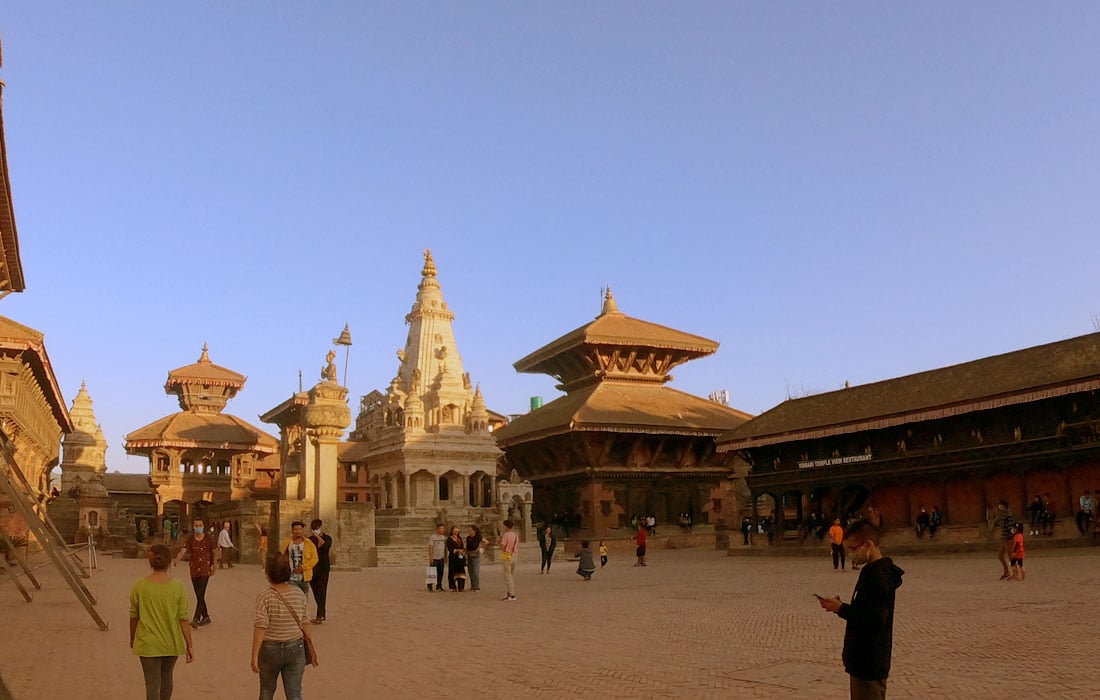




















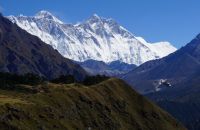
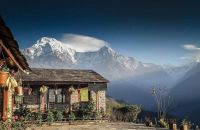
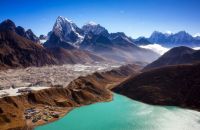
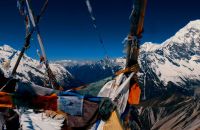
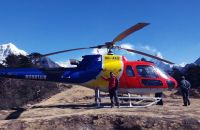
















Recent Comments